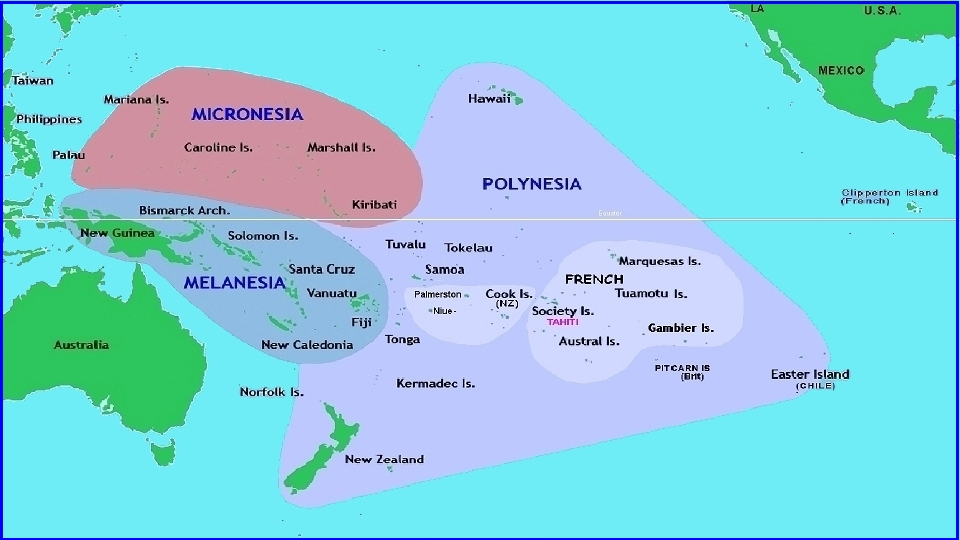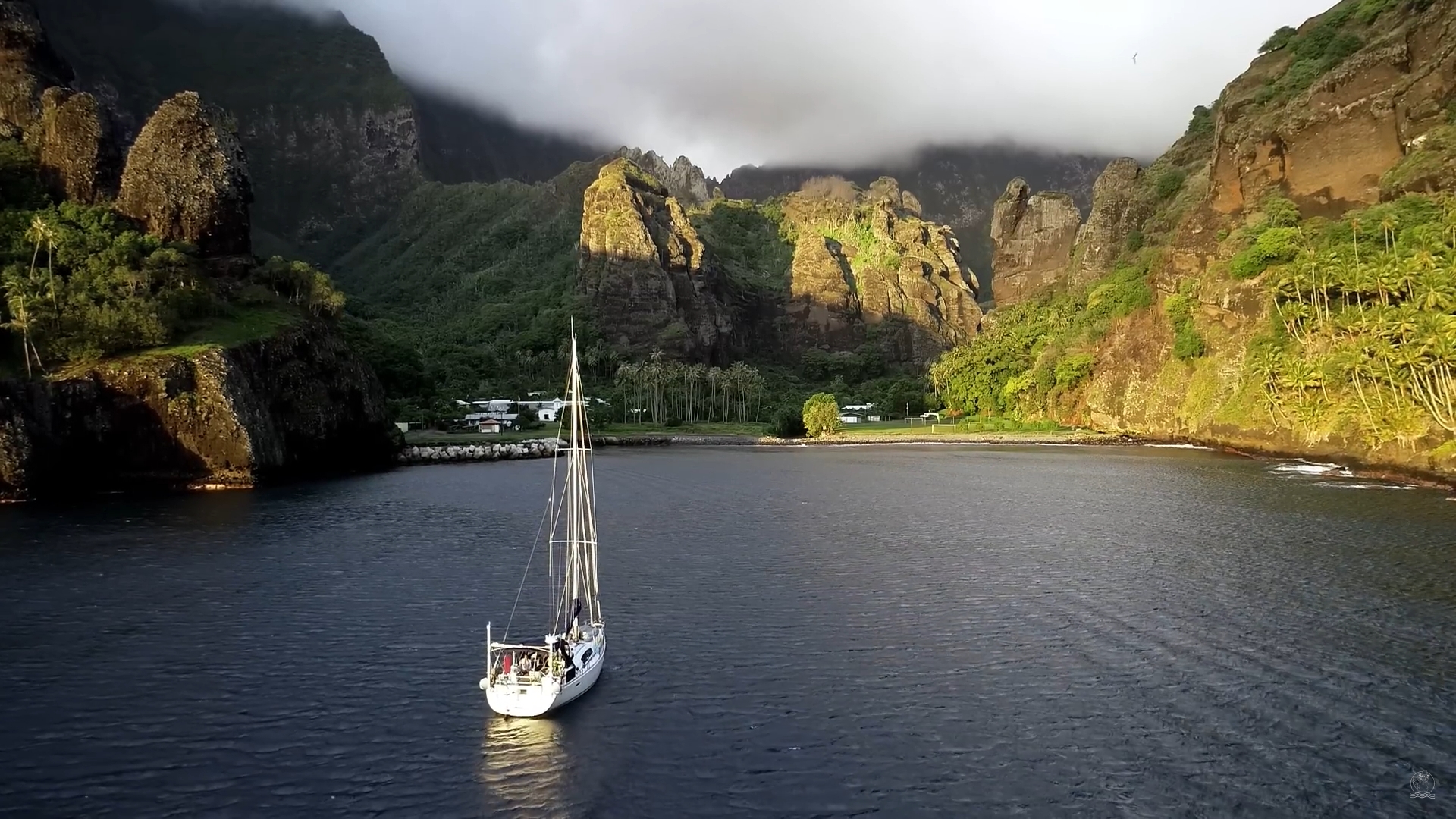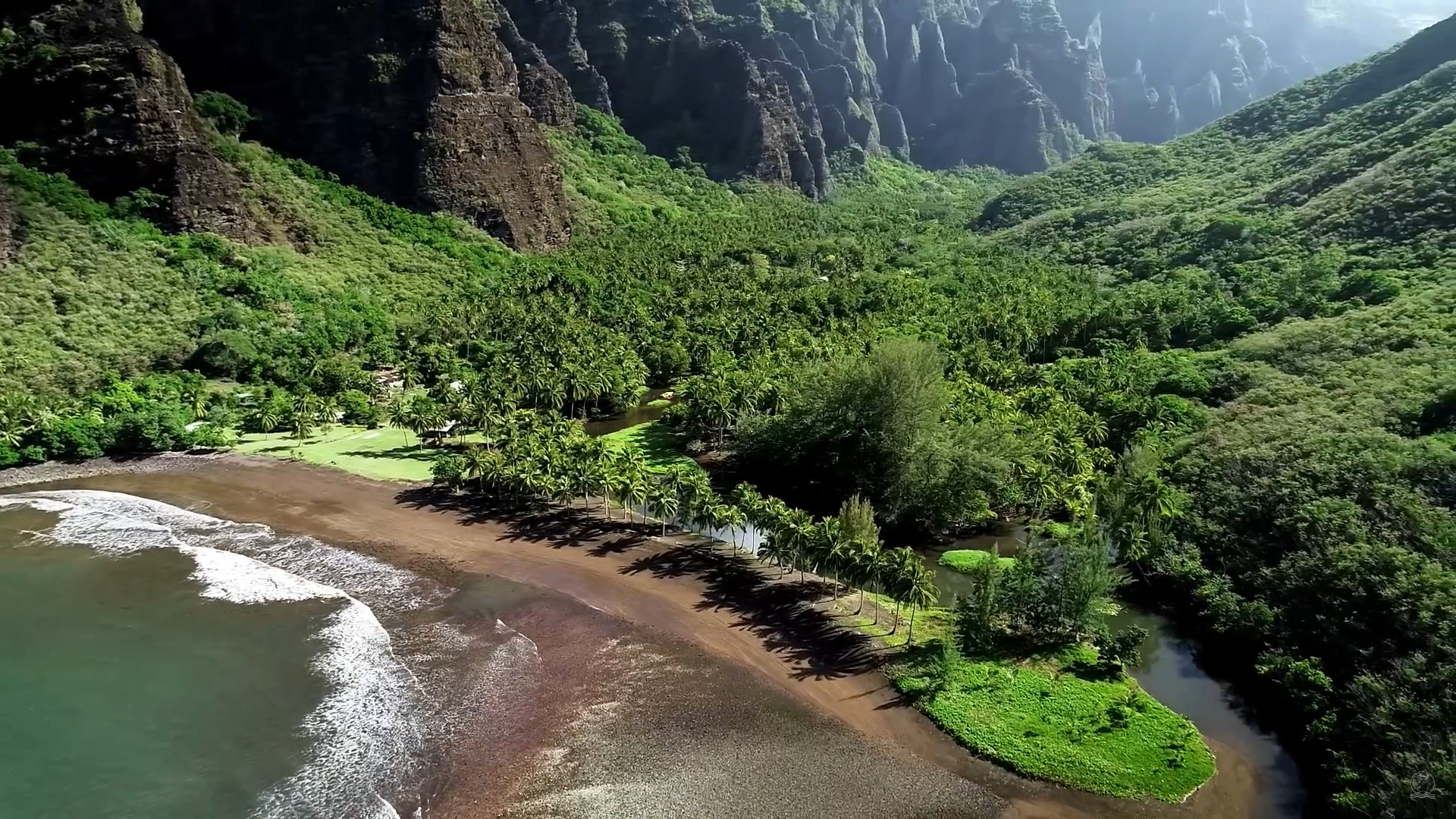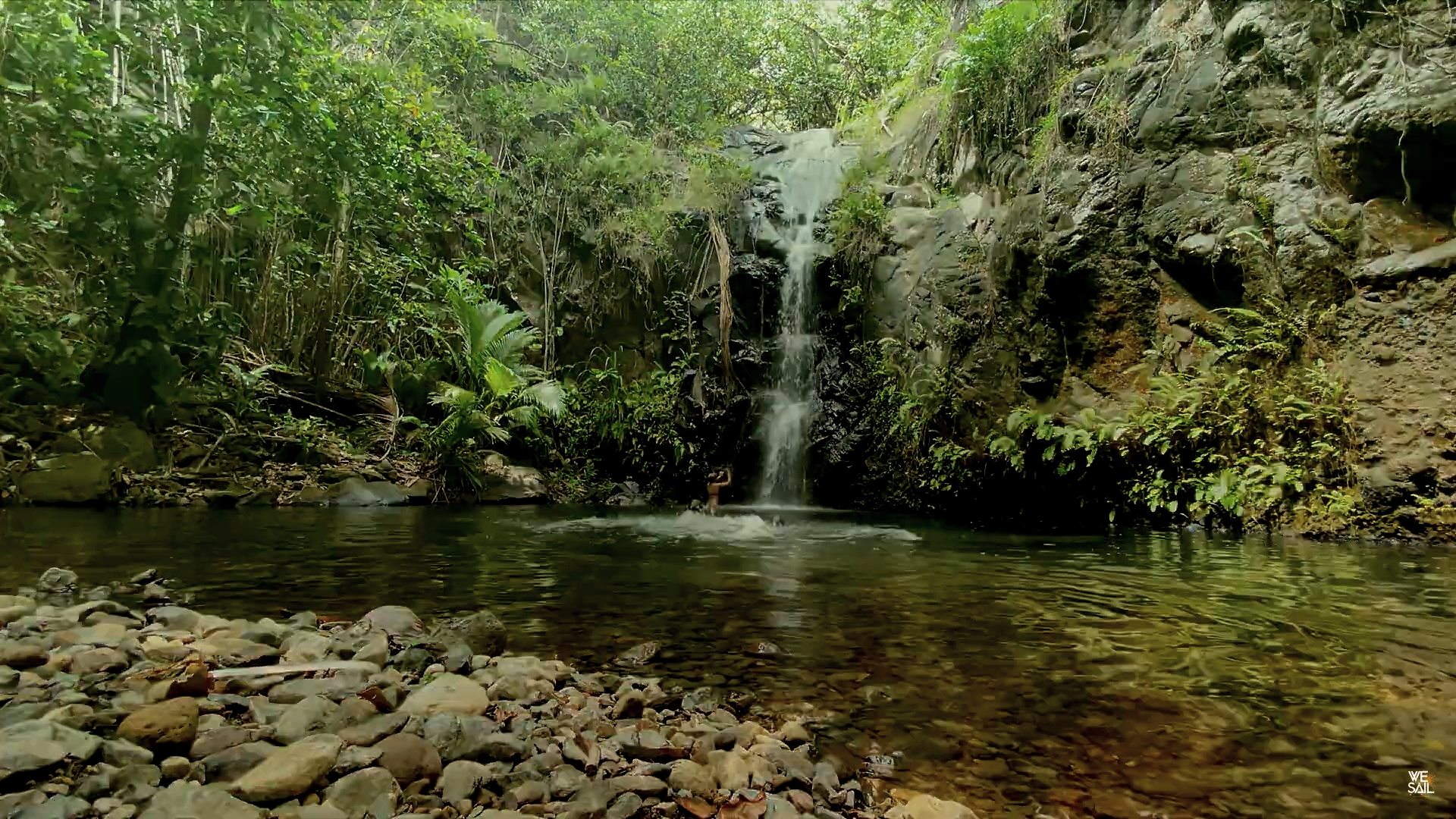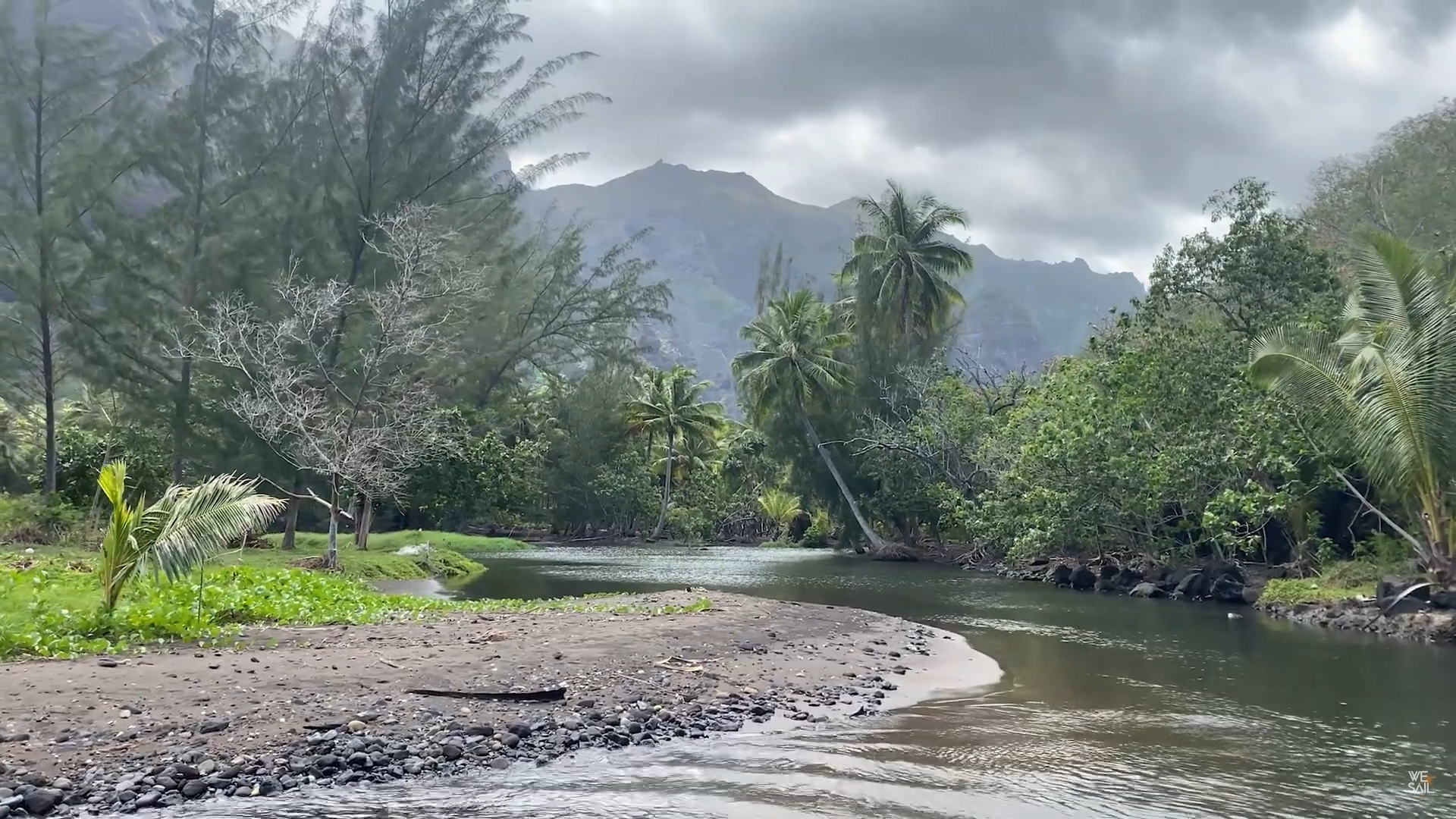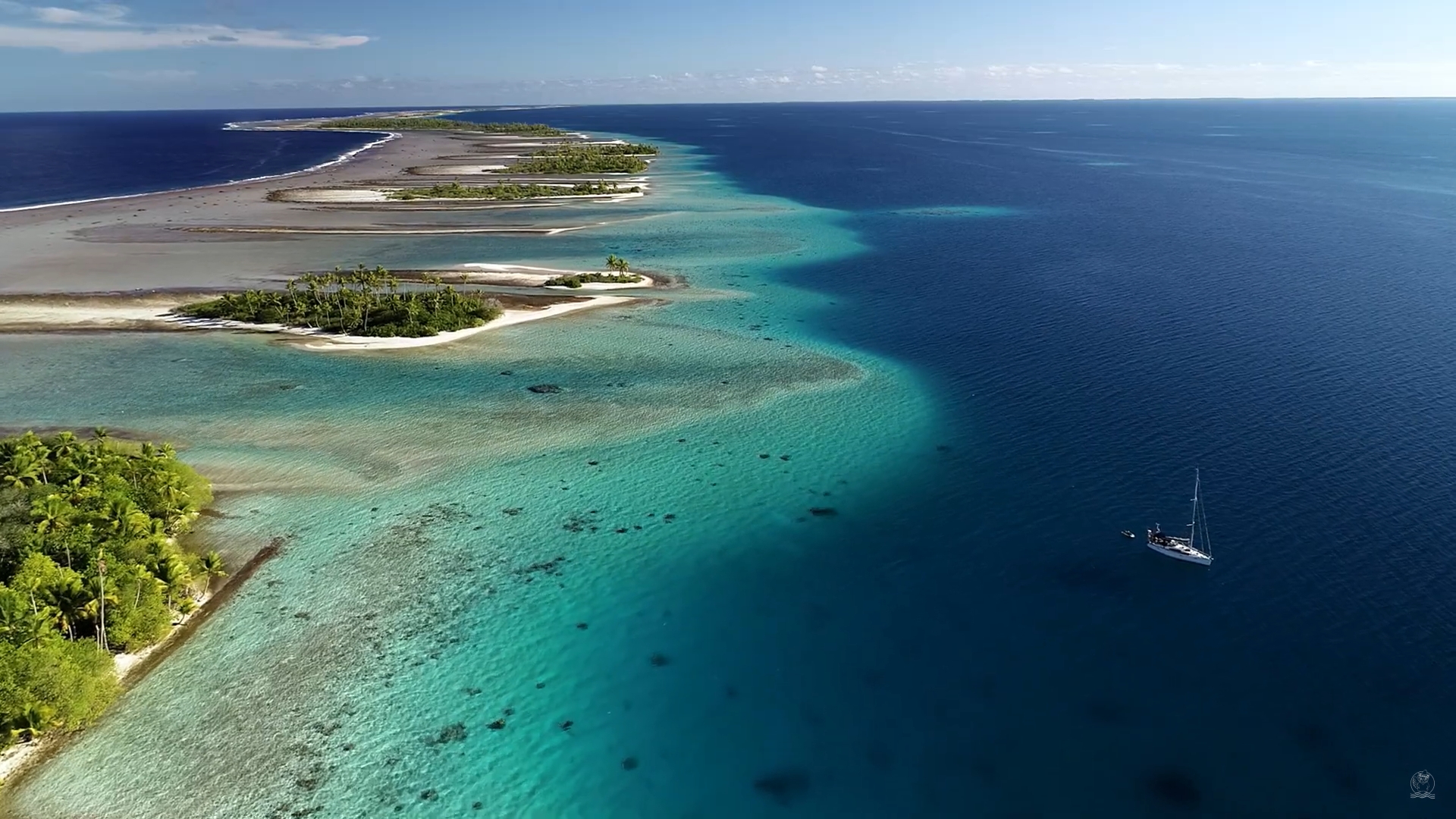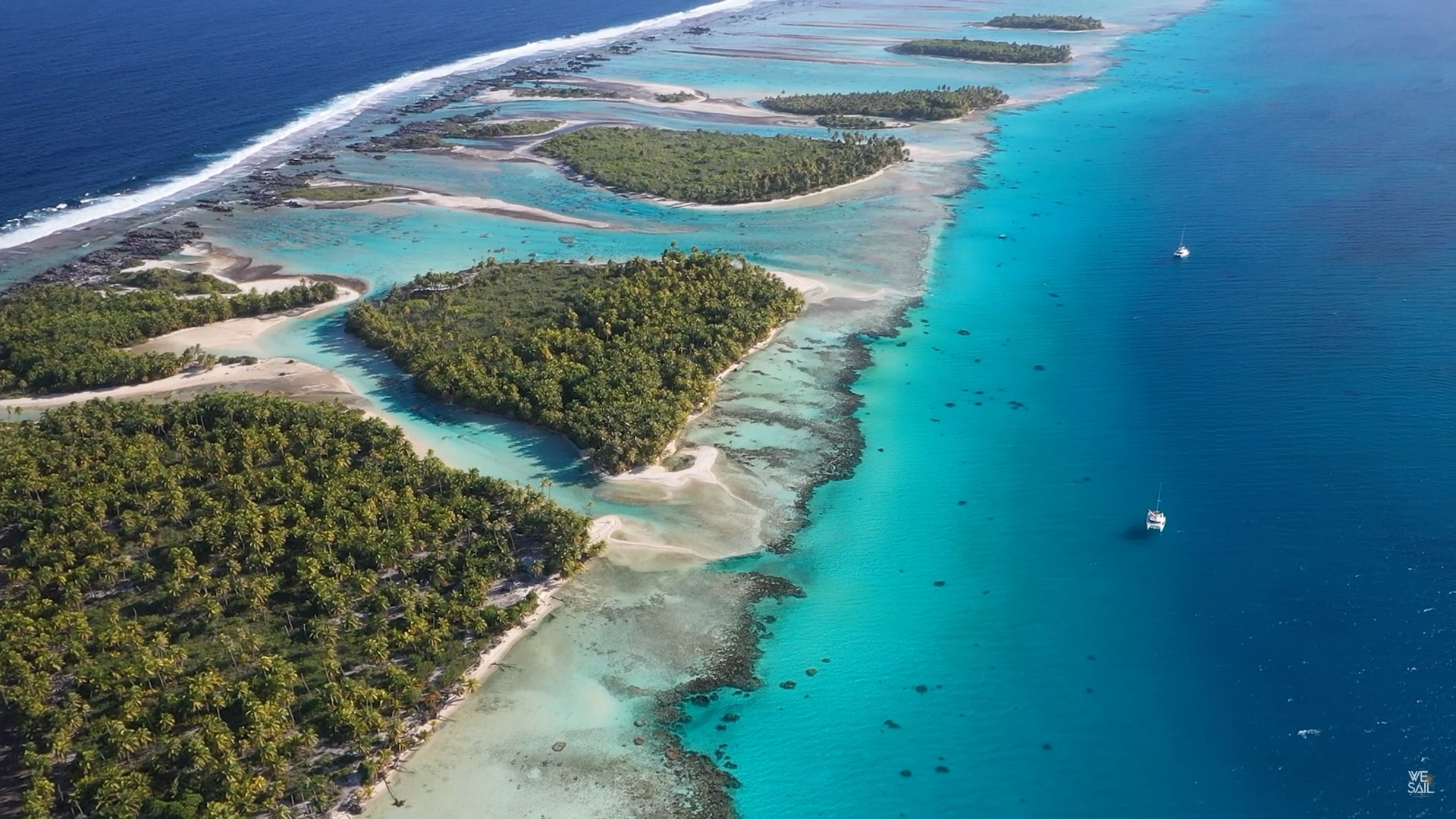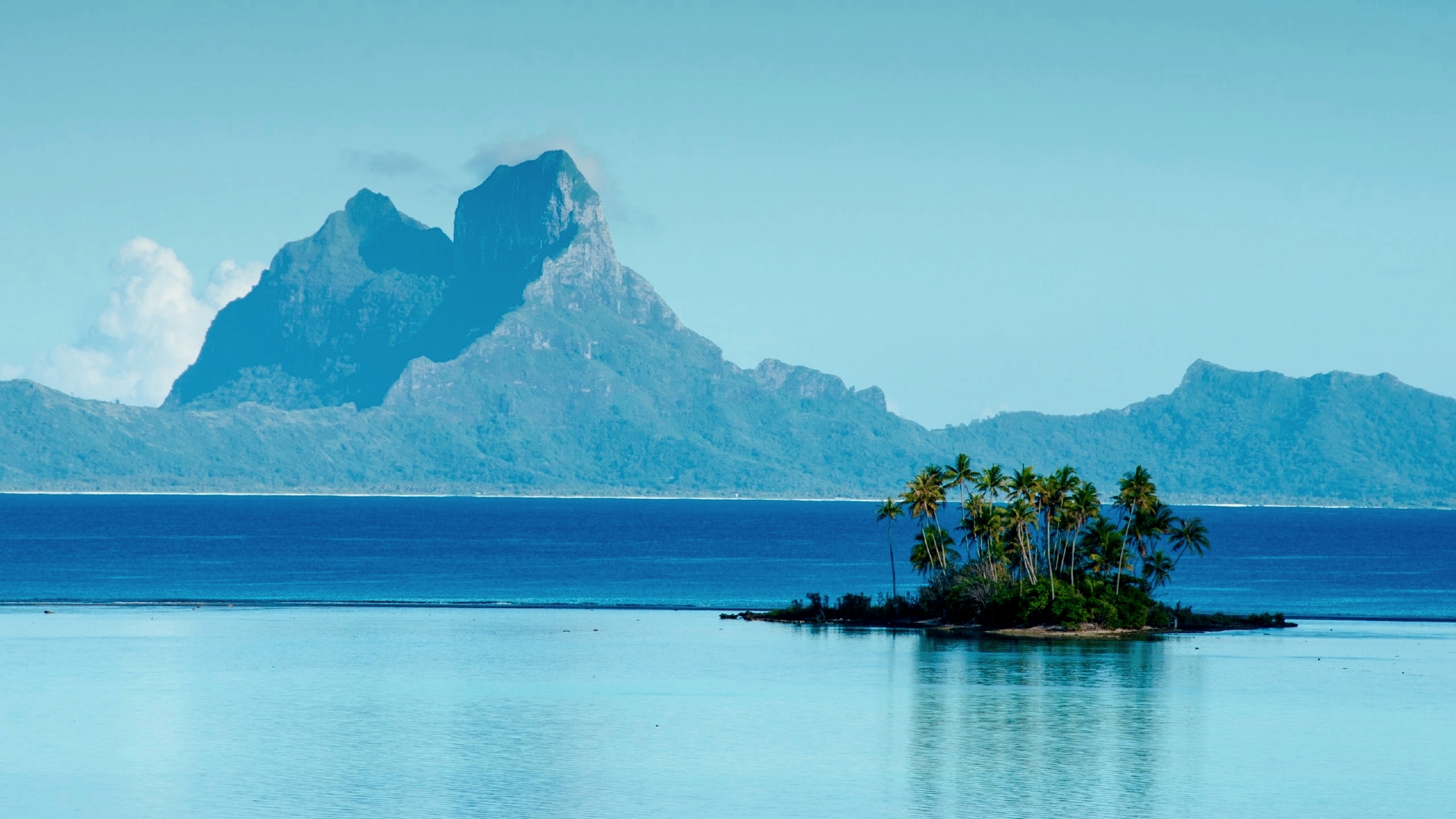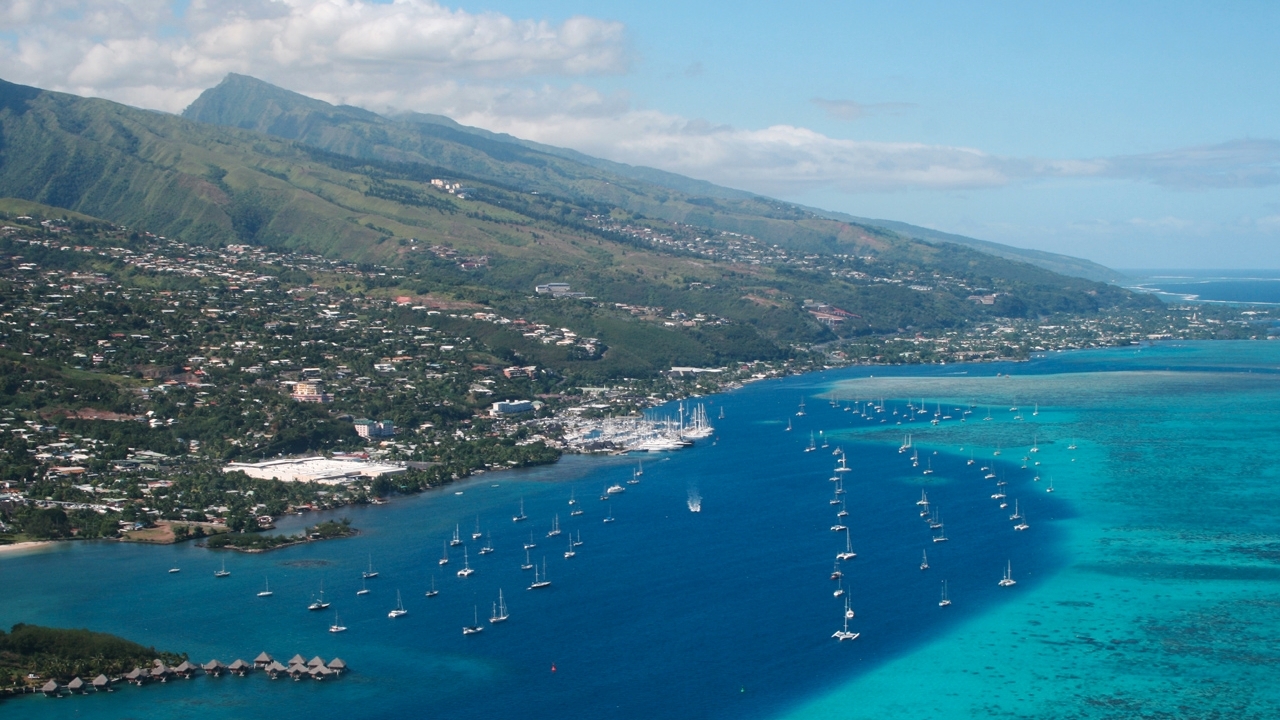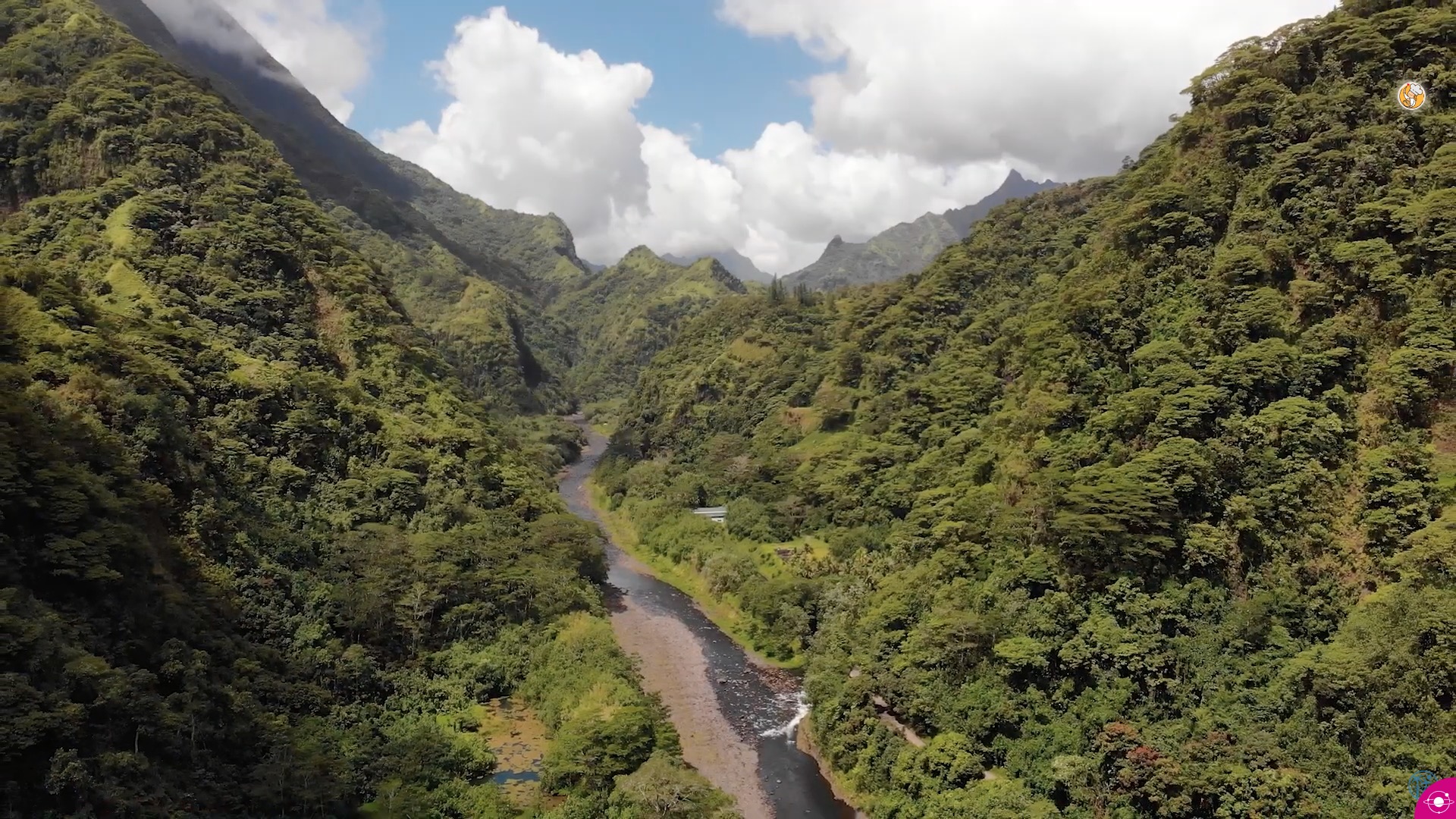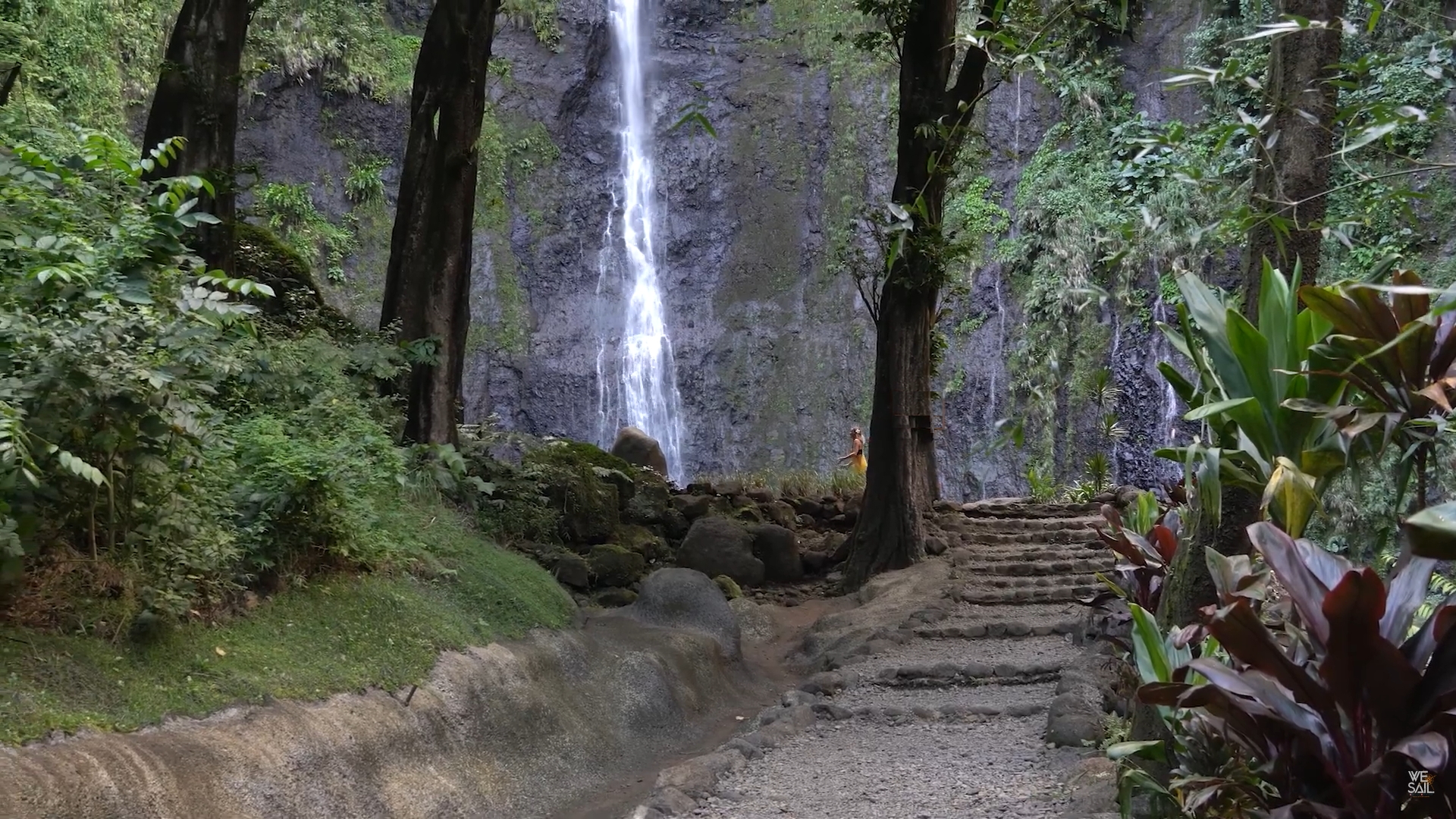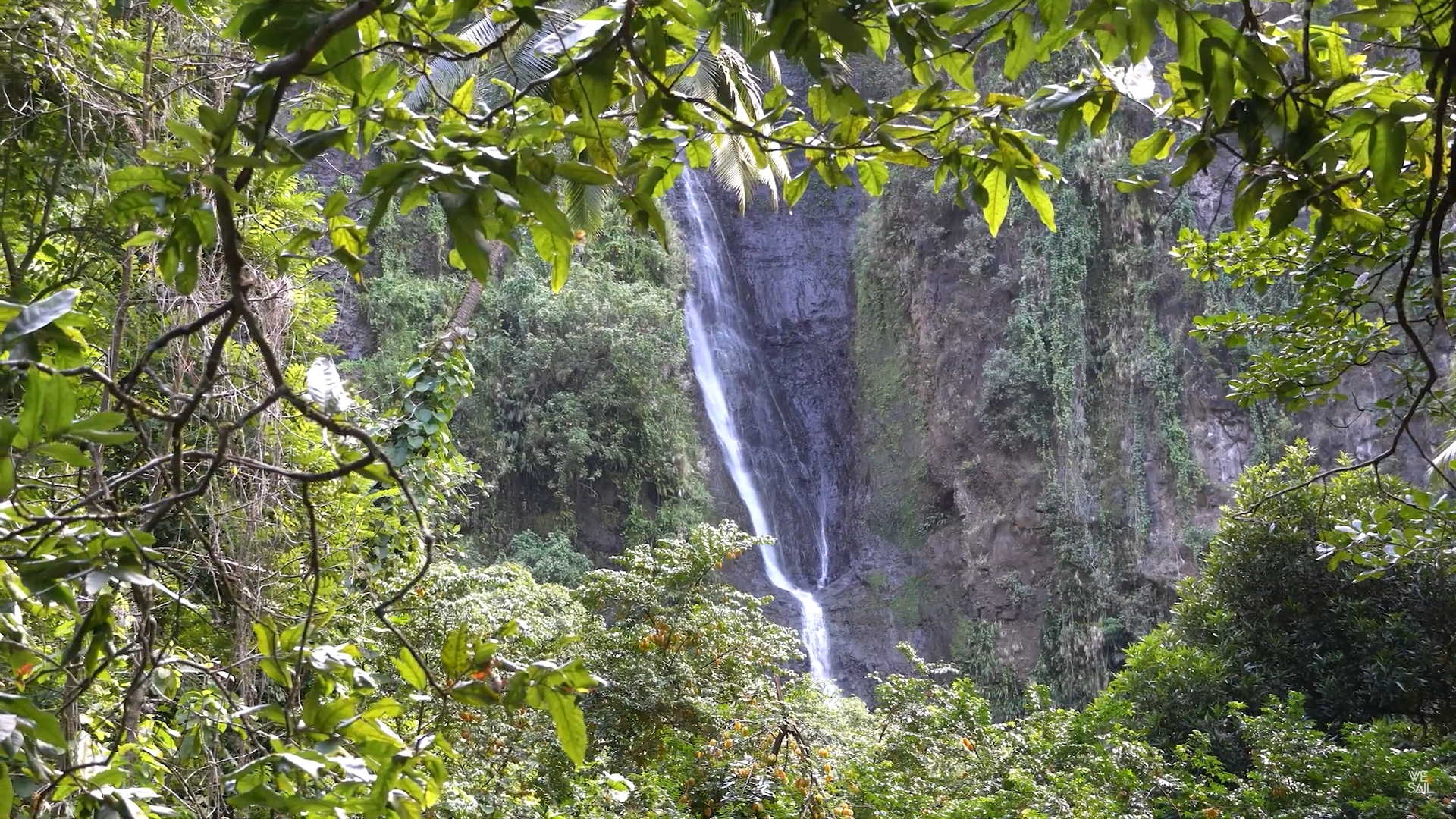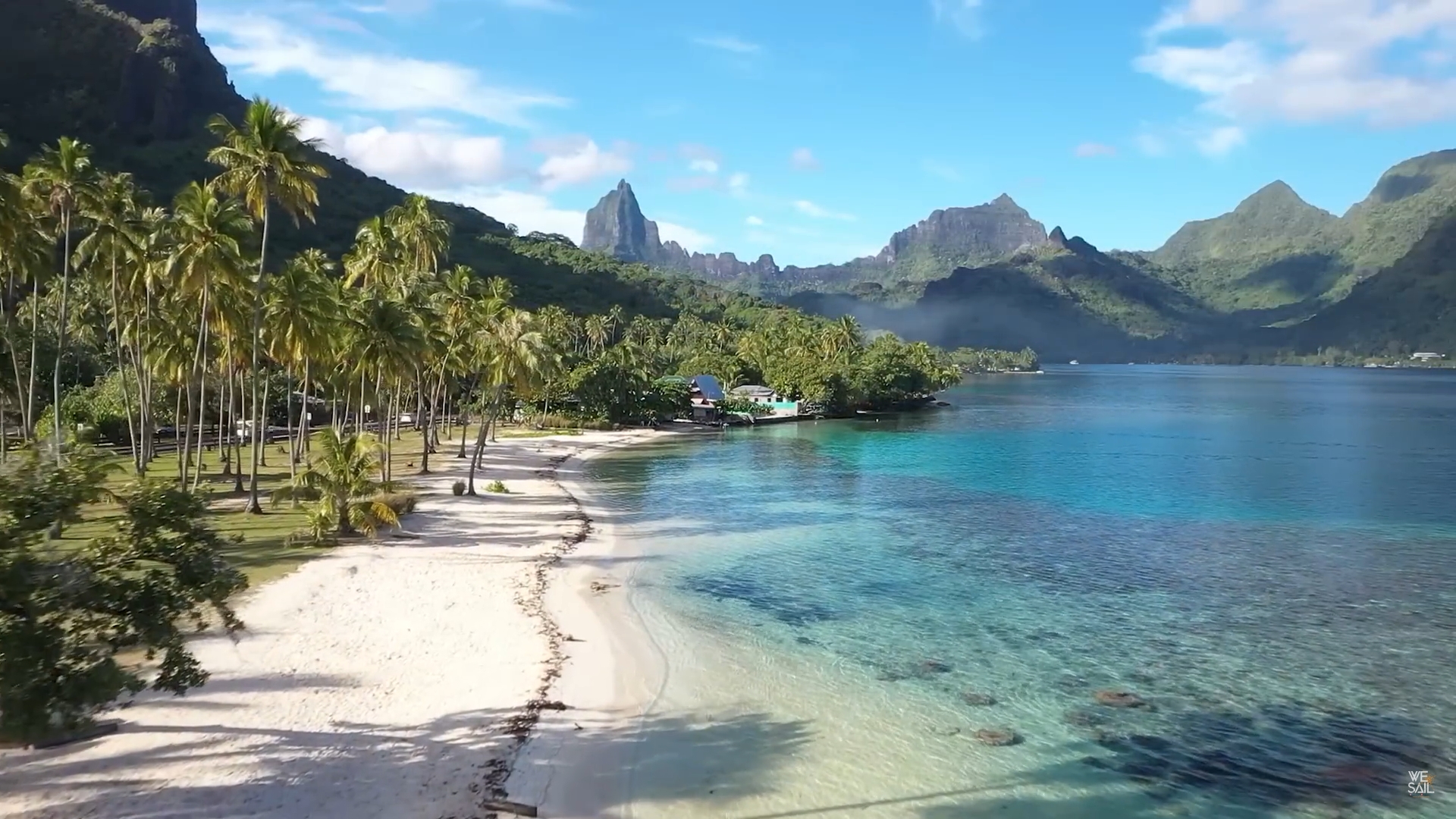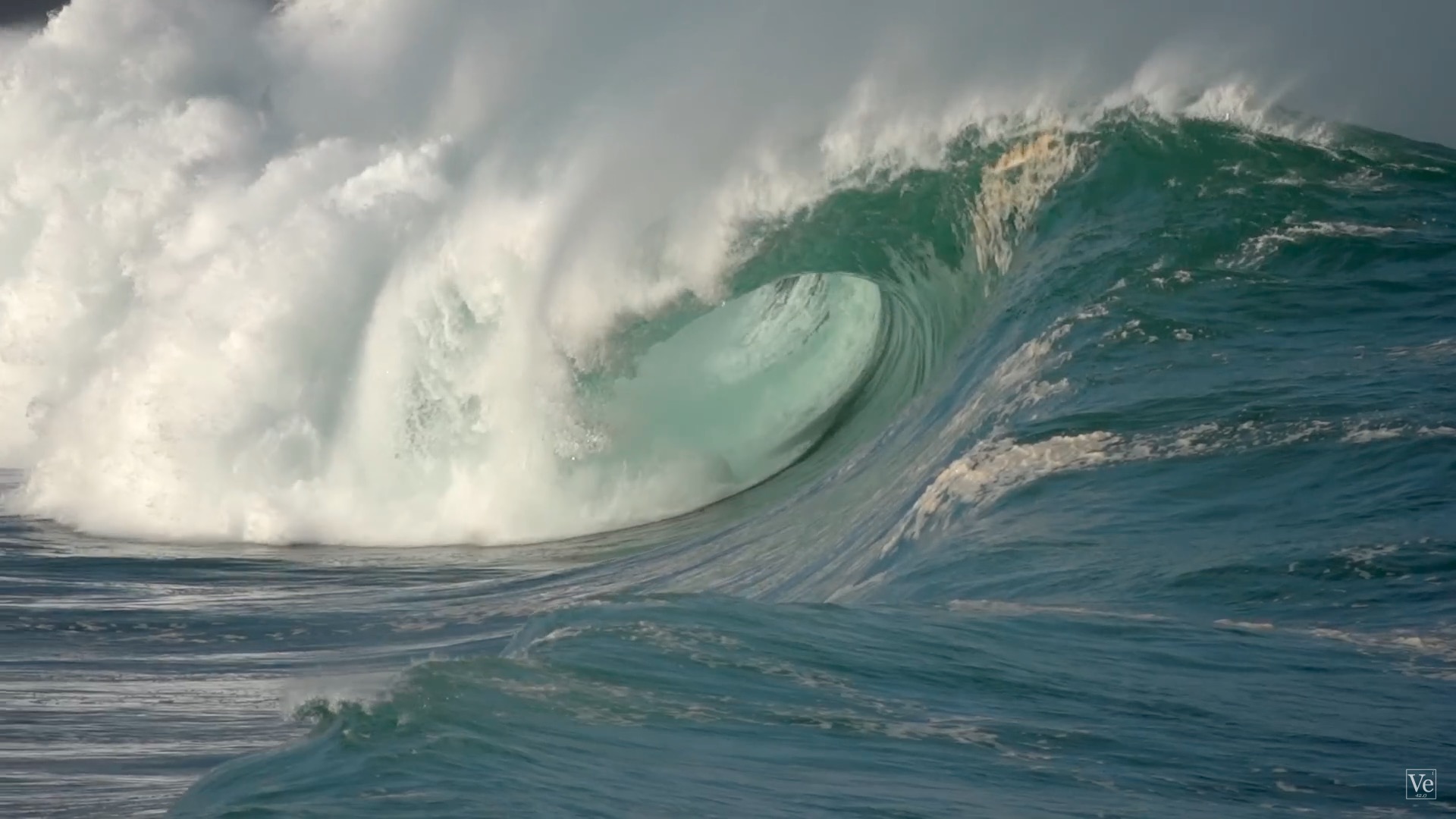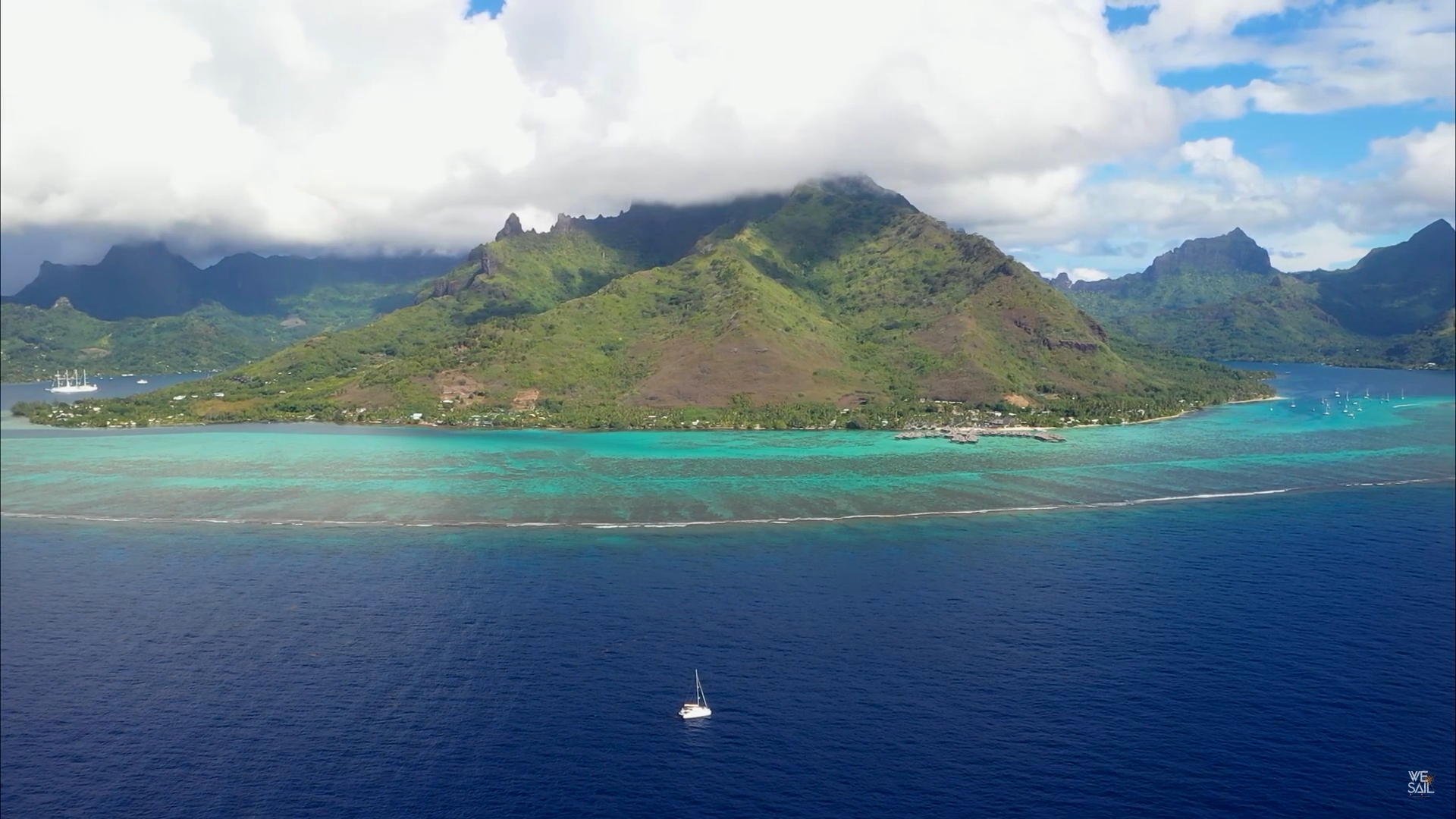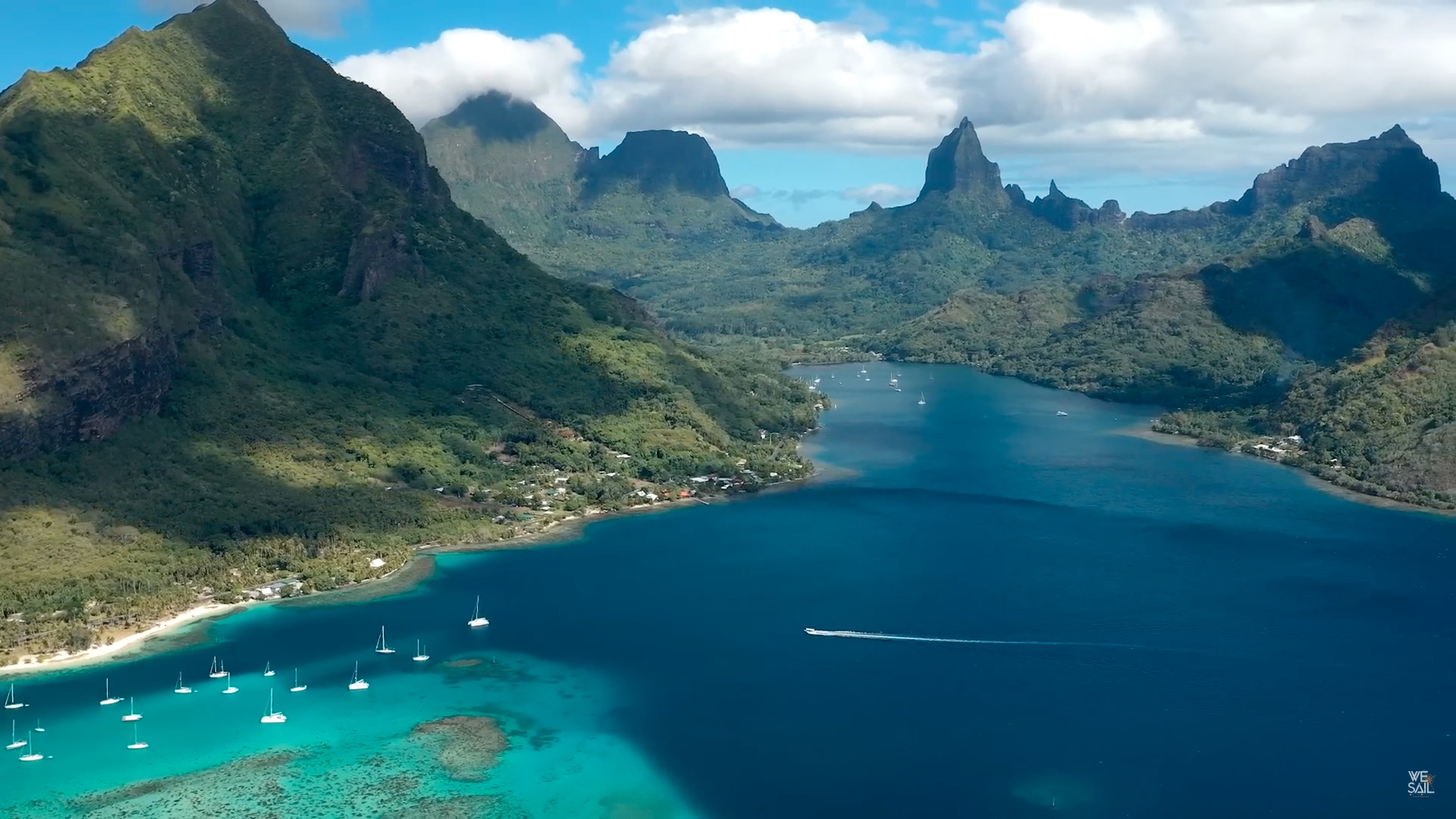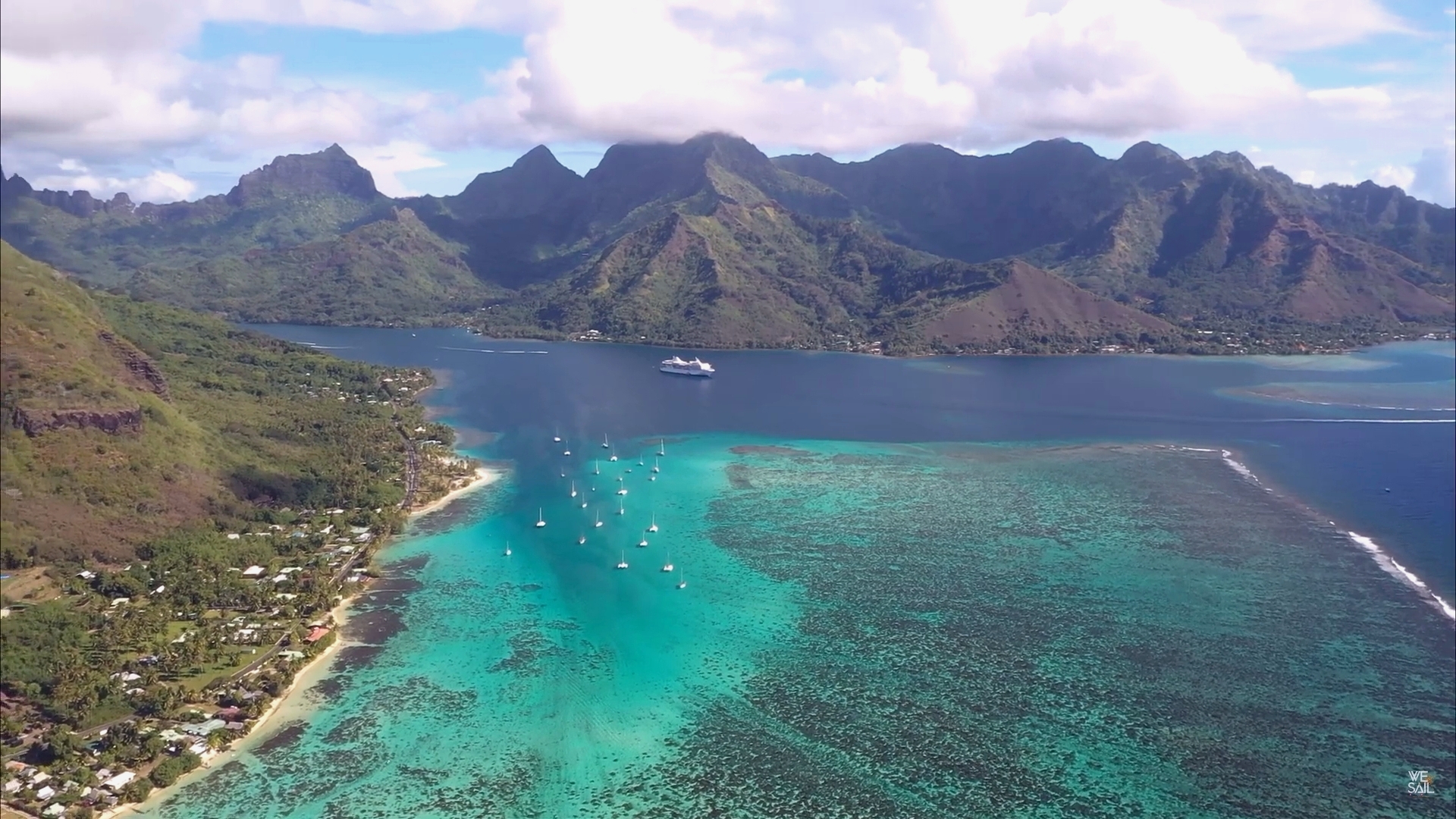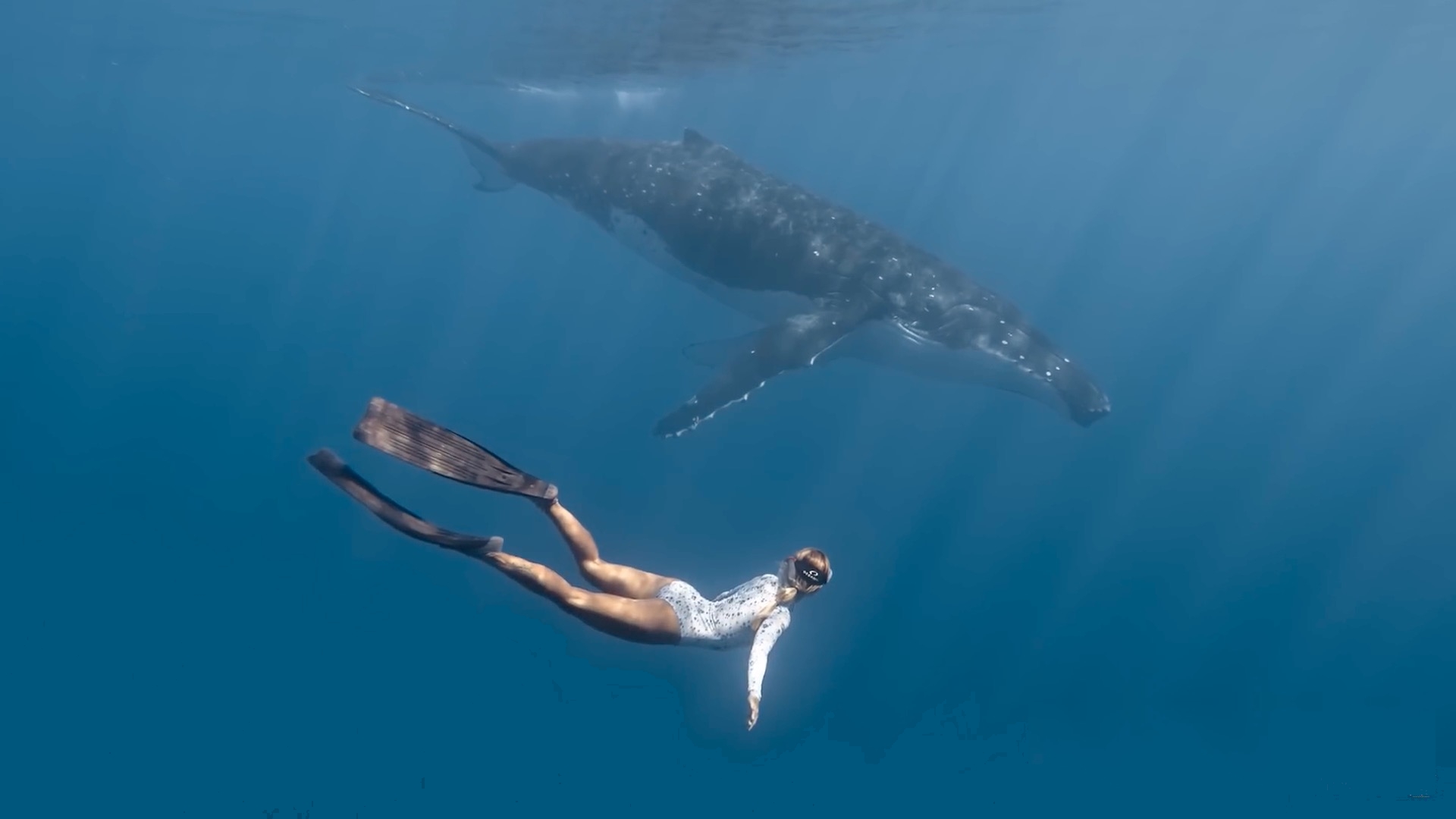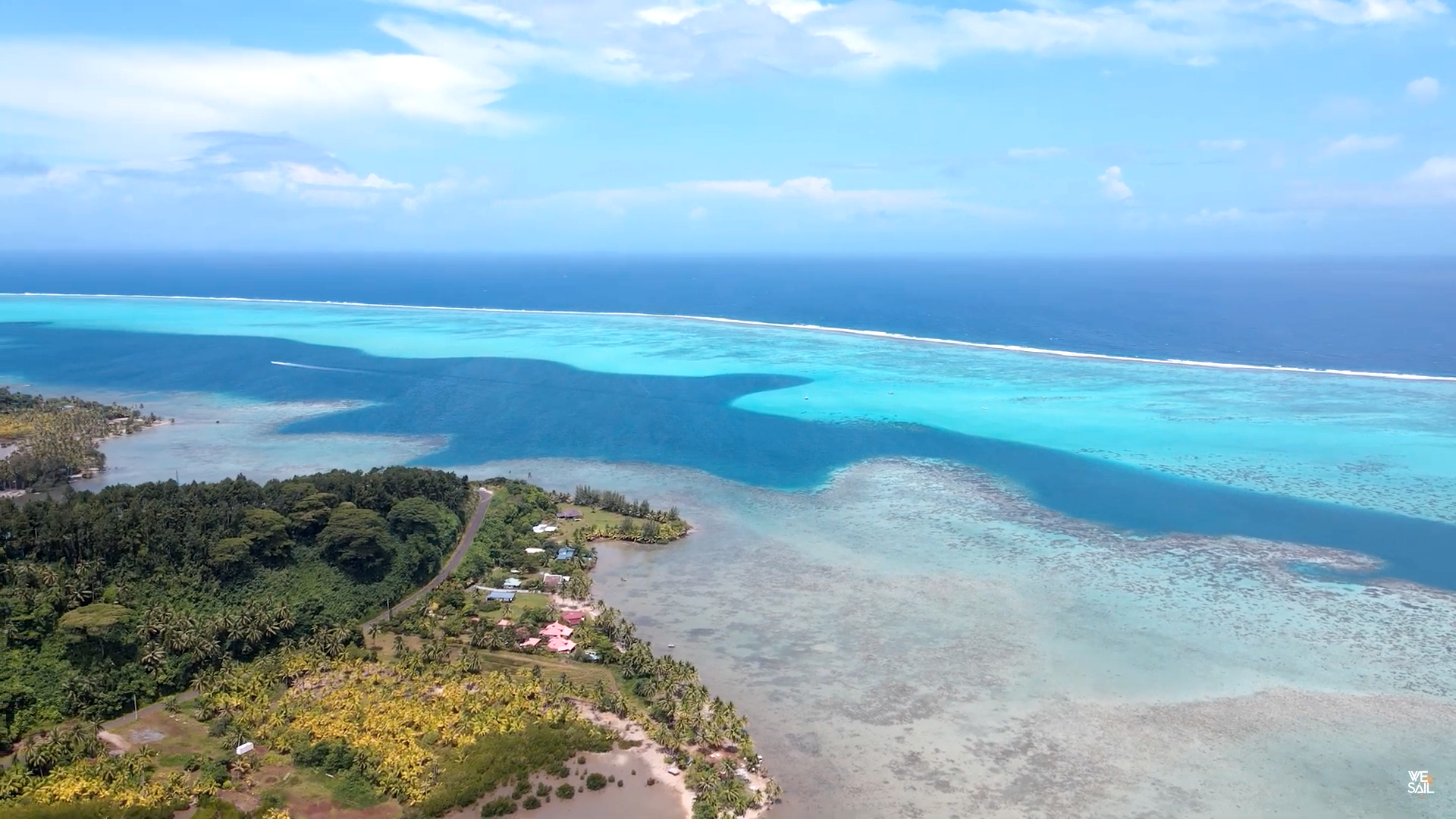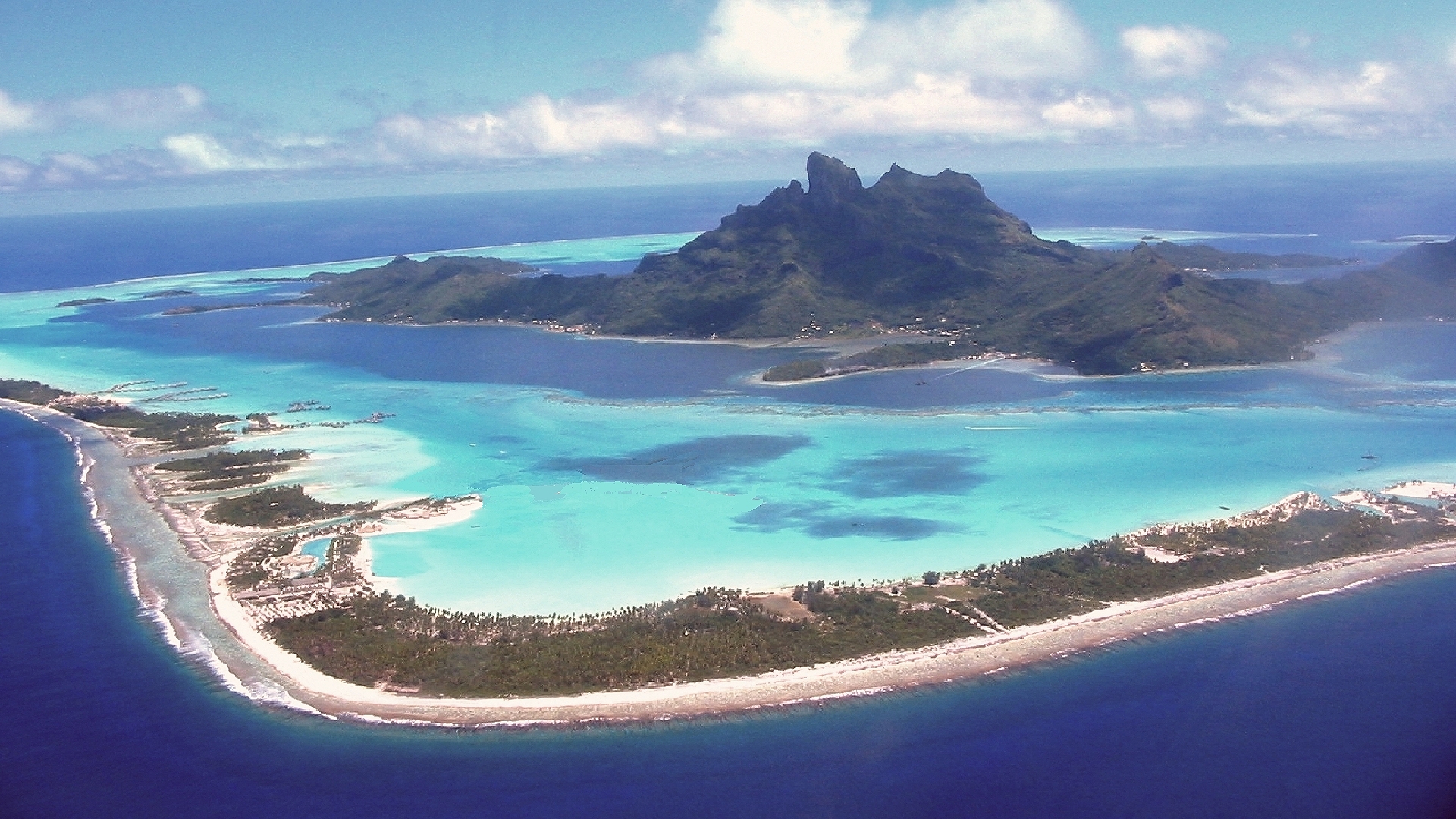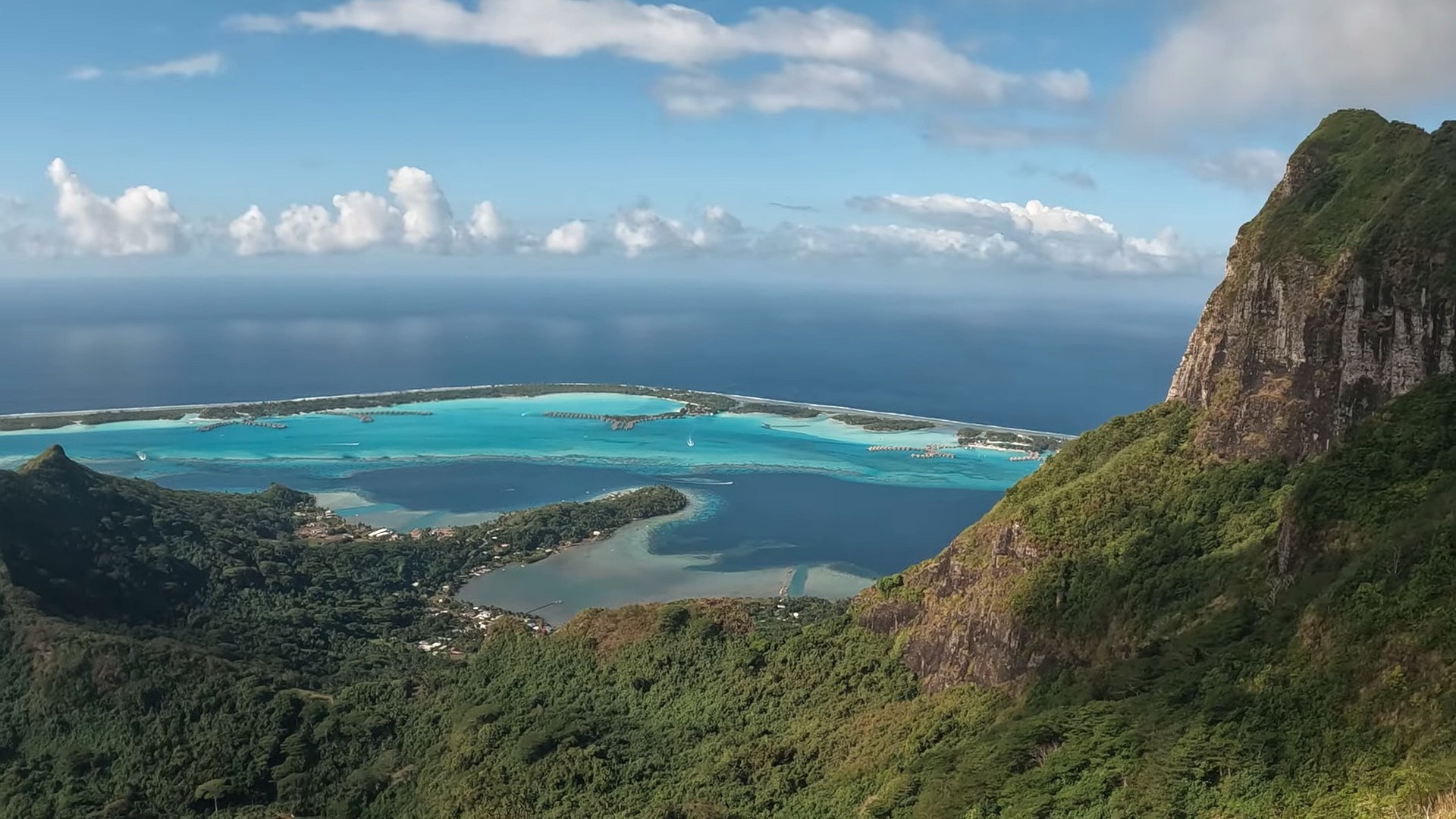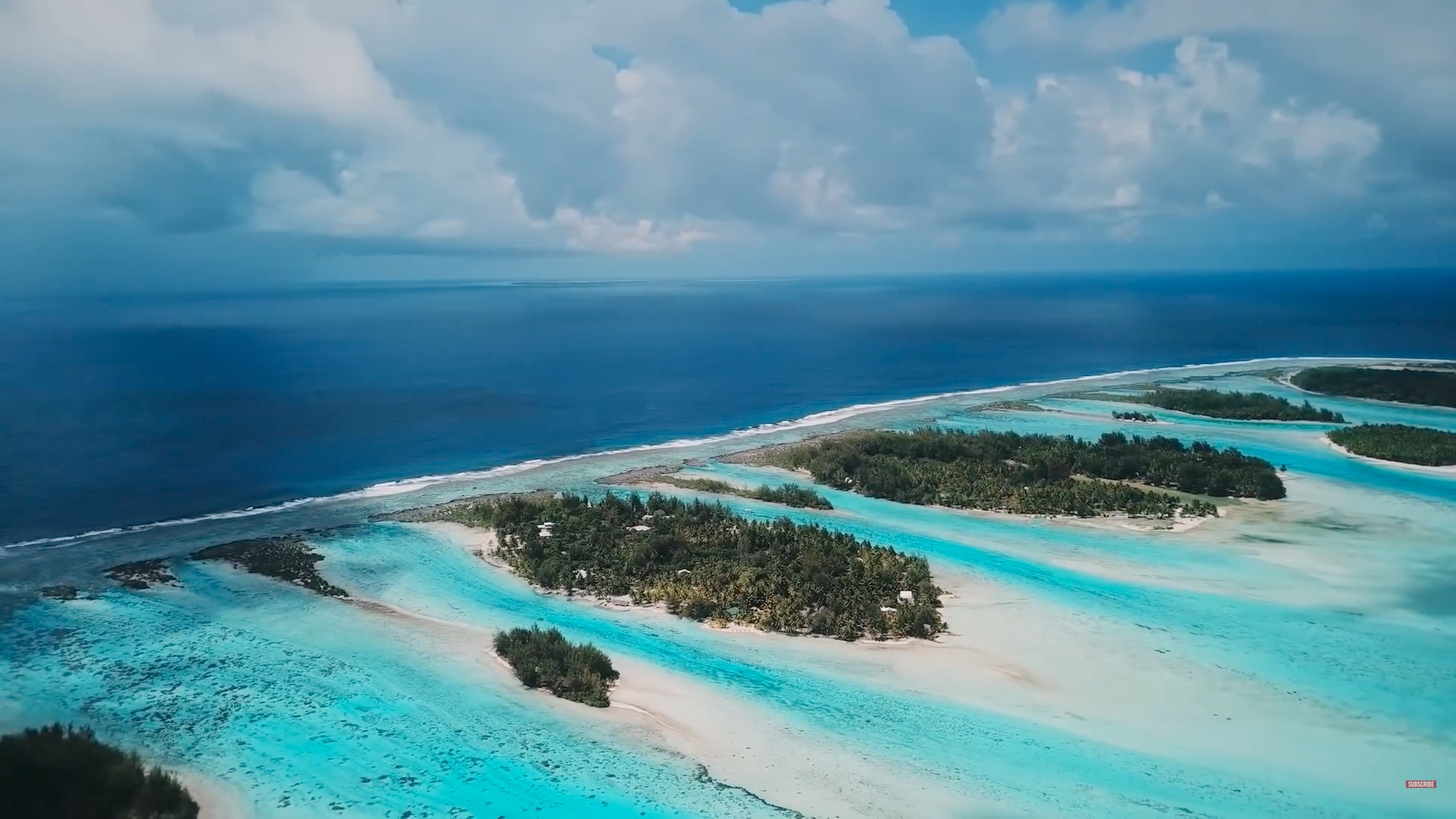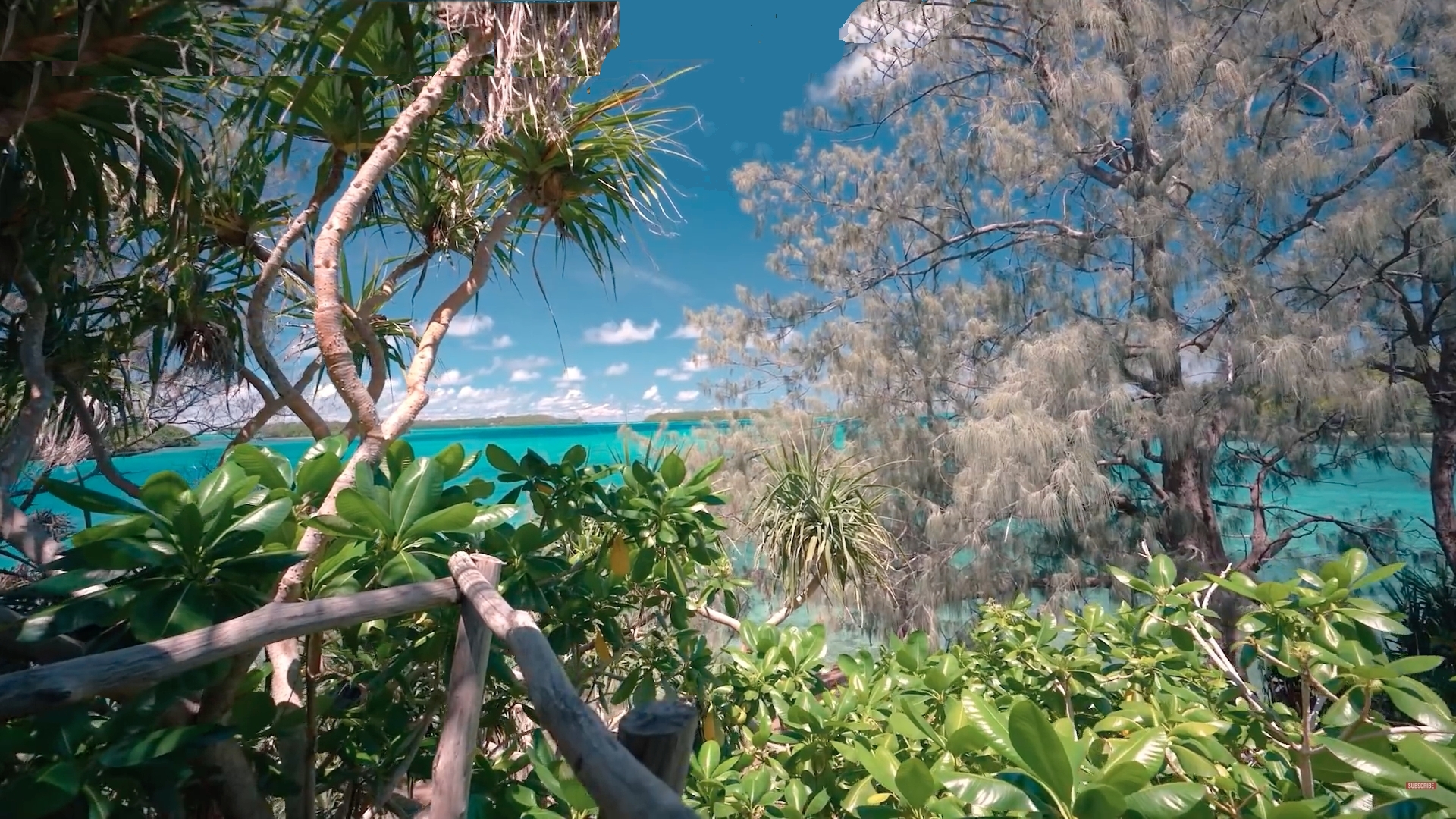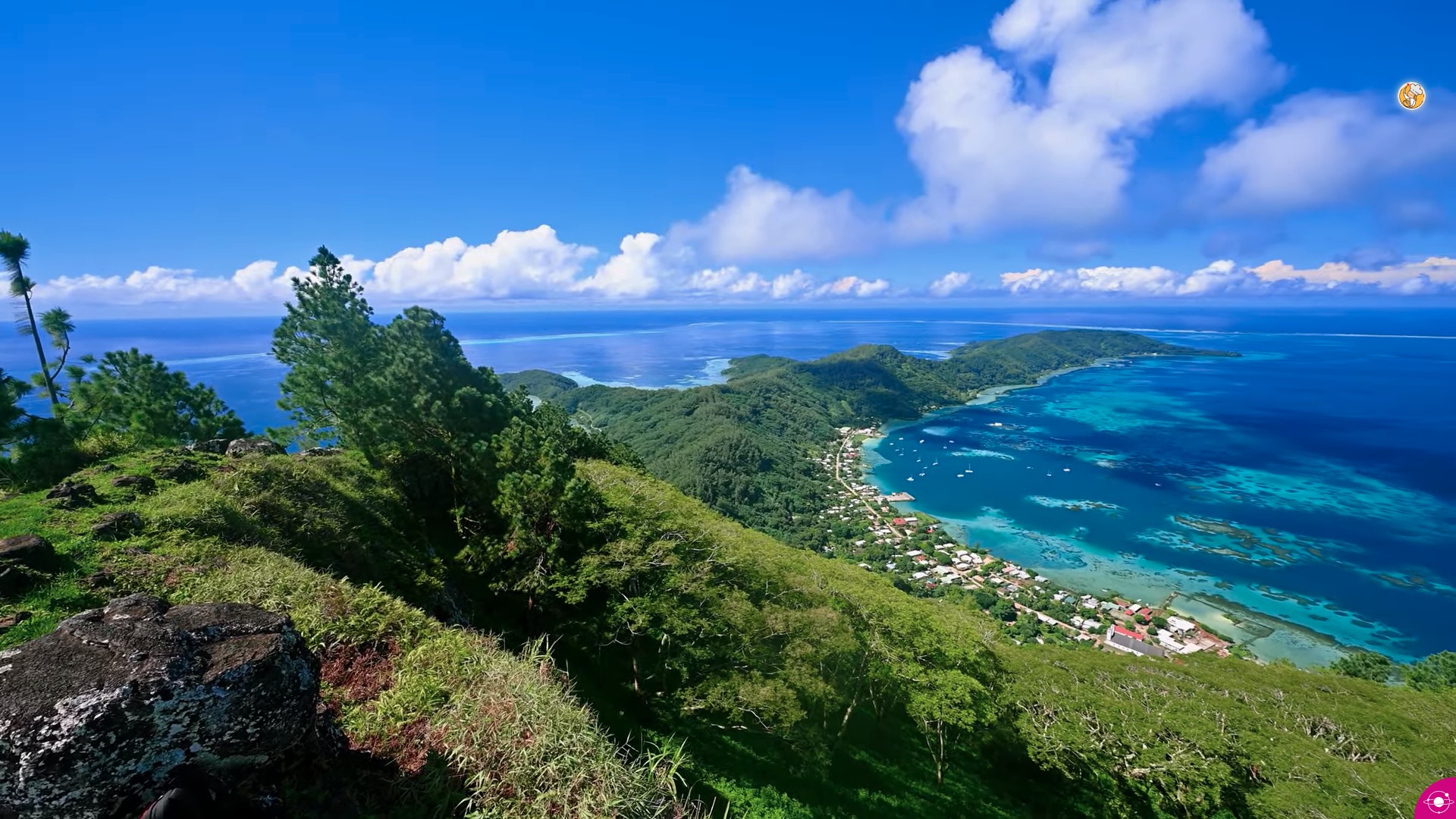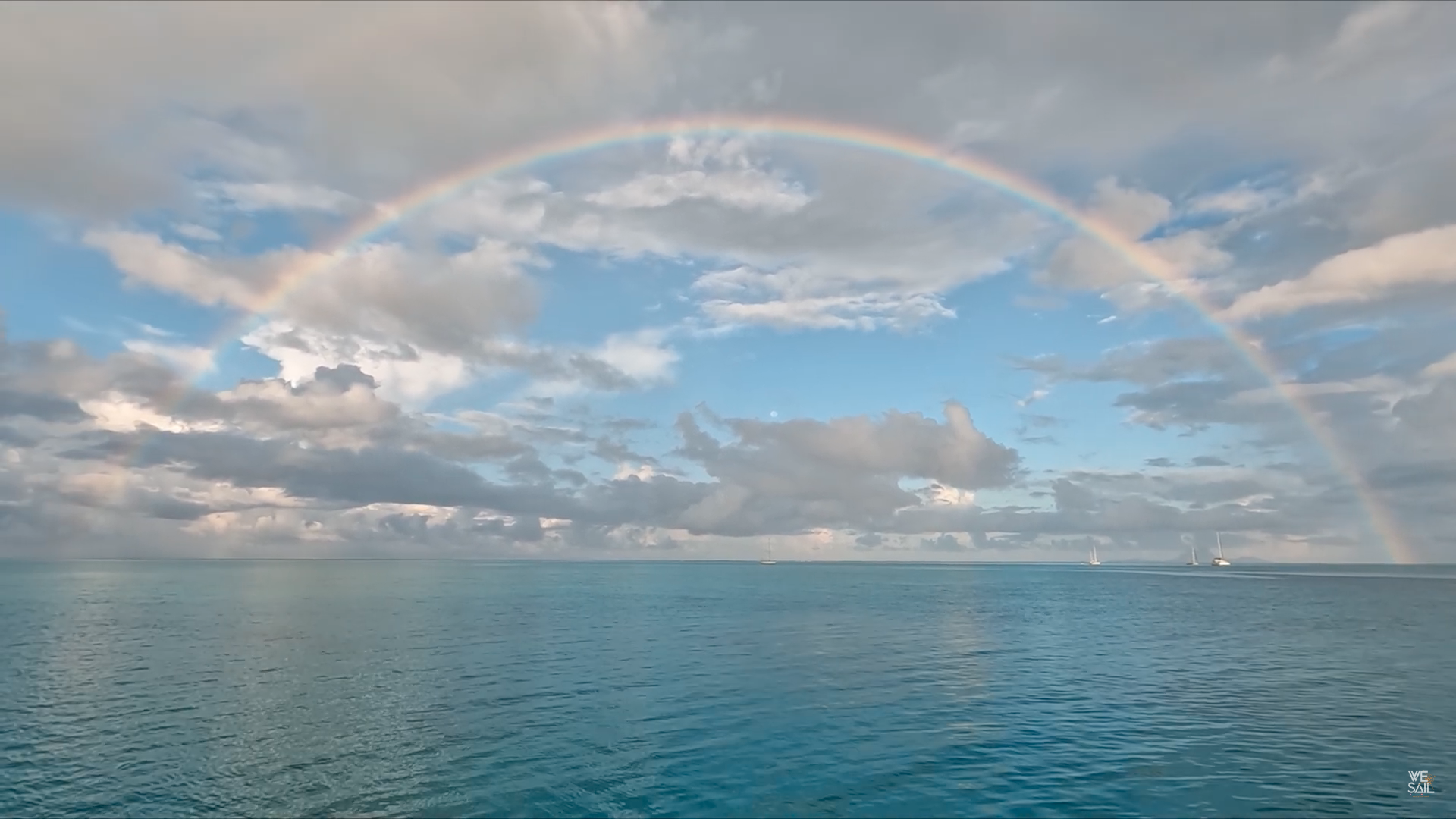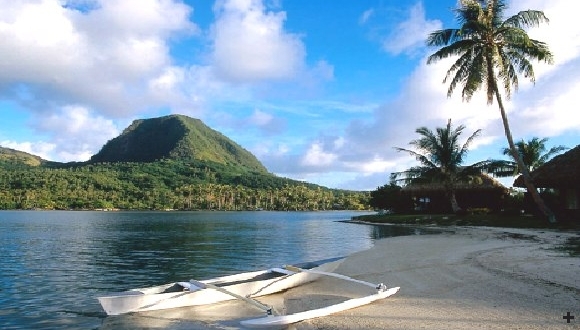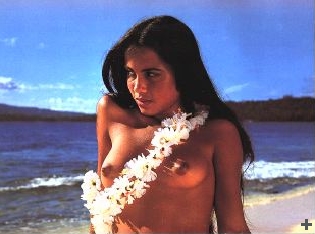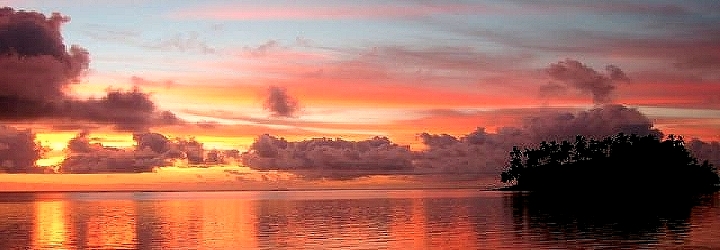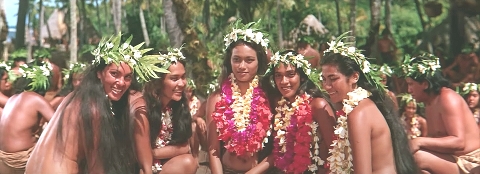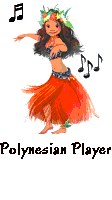 |
 Not far from Tahiti, Bora Bora and Moorea in French Polynesia lies Motu Iti |
 Motu Iti Cocktail |
 V
V


Impressions in Pictures & Music
by Sandy Estabrook
No Man is an Island* the saying does go, but who is he who doesn't dream so.
Read what Tom Neale has to say. See below.
In the South Pacific Eons ago, volcanos erupted at sea, forming islands. Coral reefs were being born in shallow waters off shore. In time, the islands started to return to the sea, while their barrier reefs continued to grow, broke the surface and formed their own islands called Motu (in Polynesian). They are usually separated from their island mother by a turquoise lagoon.
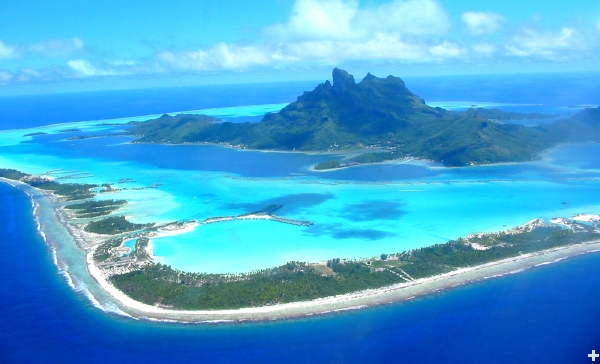
Bora Bora - Click image above for Rudy Maxa's 1 minute Video impressions with caution.
Eventually the mother island sunk (or will sink) all together into the sea leaving a ring of low lying Motus known as an Atoll. Picture a necklace of pearls separating turquoise and sapphire waters, and surrounding the place where their mom was born. The Island Above is Bora Bora and it's Motu's in the Society Islands of French Polynesia.)
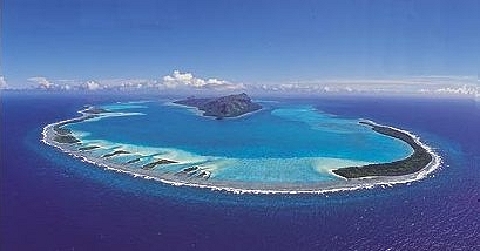
There are numerous atolls at different stages of evolution throughout the South Pacific. I had the opportunity to stand on a few motu and found that upon leaving, your heart never does. As in the lyrics of the B’way show “South Pacific” .. “It’s calling”, it’s always calling for your return. (Although the song spoke of Bali Hai, in actuality Michener was referring to Bora Bora)
Iti means little, hence Little Island. Motu Iti is the name I took home with me when I left Polynesia to be the name of my boat(s). It's also on my car's license plate. Always a reminder of my visit to that part of the world.
Today practicality must dictate, so you’ll find me not in the South Pacific but closer to home. If you are willing to forgo discos, gambling, shopping or jet ski rentals and still want to know more about this special place 77° W by 26°35 N.
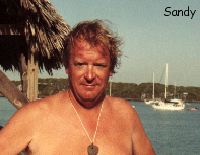
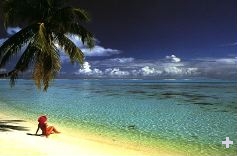
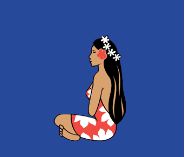
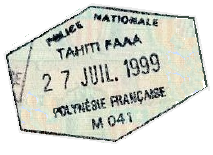
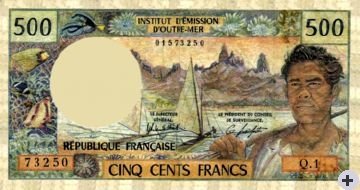

French Francs well before the Euro
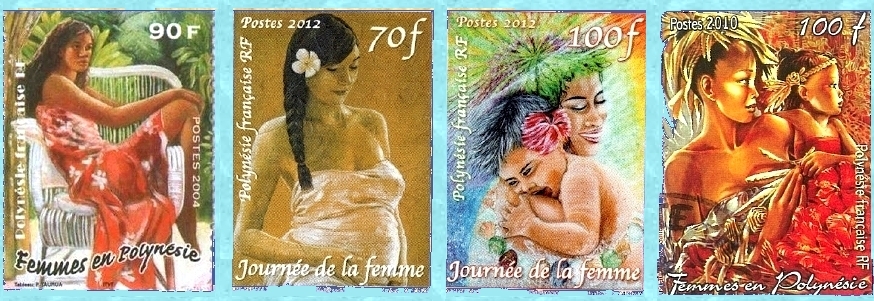
The French place their Women, Especially Polynesian, on a Pedestal. Click image for more stamps.
The Song accompanying the video is entitled "A Reva" by Tahiti Cool. "A Reva" is defined as a sensitive woman who is naturally graceful and emanates an air of balance and harmony. Upon meeting, her shyness can make her appear distant, reserved and secretive; but she is actually very anxious to be liked. Deeply attached to her emotional, familial and social values, she is a generous lady who likes to make others happy and cannot bear violence or aggression.
*John Donne (1572-1631), 'No man is an island, entire of itself; every man is a piece of the continent, a part of the main...'

Suggested Reading:
Typee - A Peep at Polynesian Life by Herman Melville
An Island to Oneself by Tom Neale

Tahitian Flag



|
Editor's Note: - Sandy Estabrook It all started after I saw Brando's 1962 version of Mutiny on the Bounty. A severe case of Island Fever hit me and more specifically the South Pacific variety. You know, beautiful islands, topless women etc etc. Add to that a visit to Ian Fleming's Jamaica and I wanted to taste more. As a result I subscribed to the monthly journal of the Seven Seas Cruising Association. I read every book I could on solo circumnavigators and retired sailing couples following the sun. I must of read close to a dozen sailing adventures by the likes of Joshua Slocam, Herman Melville, Eric Hiscock, Hal Roth all the way up through Robin Lee Graham and Tania Aebi. (And that was the days of the sextant, no GPS.) I lived life vicariously through the Hermit of Suwarrow who as a merchant marine retired to live out his days (and write a book) on an uninhabited atoll in the Cook Islands. I remember telling friends, "when I retire, I'm gona buy a shortwave transceiver, move to an island in the South Pacific and listen to the problems of the world." In all of the above my main focus was primarily the Maori Islands of Polynesia. Namely, the French Islands of The Marquesas, where Herman Melville fell in love and Jacques Brel and Paul Gauguin spent their final days. The Society Islands (today French) of Captain Cook of Tahiti, Bora Bora, Moorea etc. And also the English speaking Cook Islands and Western Samoa and the Island Kingdom of Tonga. They all are part of the Polynesian Triangle, which stretch their way from the northeastern tip of New Zealand to the aforementioned groups eastward to Easter Island and up to Hawaii. That's about 117,000 square miles! And buried in that sweeping expanse is little Pitcarin Island is where mutineer Fletcher Christian took to hiding.
After arrival in Tahiti, prior to our departure to the out islands, we will always remember, chatting with a fellow at the then Beachcomber Bar. He too just arrived. What we didn't know initially and which eventually was revealed, was that this was his second trip with his first trip being only a month prior. Upon his return to Boston, he closed shop, rented his home and returned to Tahiti for a time to be determined. Talk about island fever! When we left Polynesia, I brought with me a bottle of Hinano which adorns my book shelf to this day. And I borrowed the name Motu Iti which I gave to my boat(s) and eventually this website baring its name. In regards to the latter, one day I got to playing with html, the code of the internet. Now what to do with this new knowledge? Well, I got creative and with some pictures I took or found on the web plus some music I purchased during my visit, came up with this simple page - MotuIti.com. That was in the mid '90's, the early days of the internet. From inception there has been little updating of this page except a change in a couple pictures. I then added this dissertation in Spring 2011 as the world tumbles into financial turmoil and social unrest. Editor's UPDATE 2025:
With the aid of GPS and regularly updated weather forecasts, typically sailors travel with the wind westward the 3,000 +/- miles, 3 week journey from the North America till they would make landfall at French Polynesia's eastern most island group - The Marquesas. Unlike what one might expect The Marquesas consists of towering cliffs of rain forests and waterfalls with few beaches and final the resting place of Paul Gauguin. Then its usually on to the Tuamotu atolls - low lying islands usually less than a meter high, and circling a shallow lagoon. Many of these cruisers say, these are the most beautiful islands of all, the Original Garden of Eden. From there its on to The Society Islands and French Polynesia's capitol, you know it as Tahiti. Also included are the islands of Mo'orea, Bora Bora and a handful of other islands. The Cruising Folks: A good many of he images in the slide show were shot by Warren and Erica, aboard, their Fountaine Pajot, HELIA, 44 catamaran. They eventually crossed paths and befriended Brien & Karin on S/V DELOS while on their second circumnavigation. They have been cruising for 13 years and have posted over 500 YouTube videos and were the couple that got me hooked into watching cruising folks in the first place. Kate and Curtis aboard SWEET RUCA took the long way to Polynesia around South America via Cape Horn! They are the only ones, of my following to do that. Everyone else took the Panama Canal shortcut. Another favorite is PARLAY REVIVAL, captained by New Zealander, Colin MacRae, his wife Brittany does all the video editing. He flew to St. Martin to buy a hurricane damaged Lagoon 450, fixed it up and set Sail for New Zealand. He is often accompanied by a few of his patrons making for a lively video. Lastly of honorable mention are Britt's, Matt and Amy aboard their 37' monohull FLORENCE. They just finished their circumnavigation and are now circumnavigating the British Isles before heading to Scandinavia. For all these sailors, the whole world is their back yard. I Can be reached 
|
